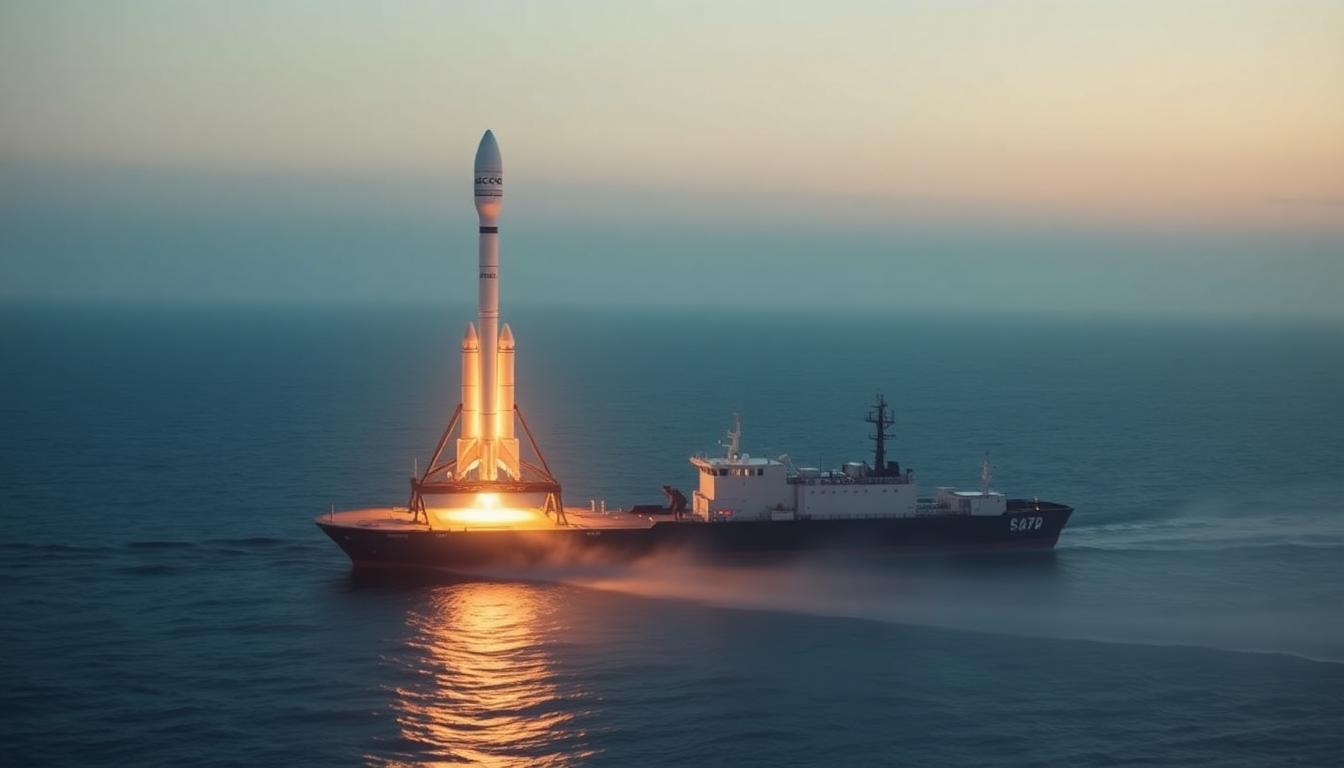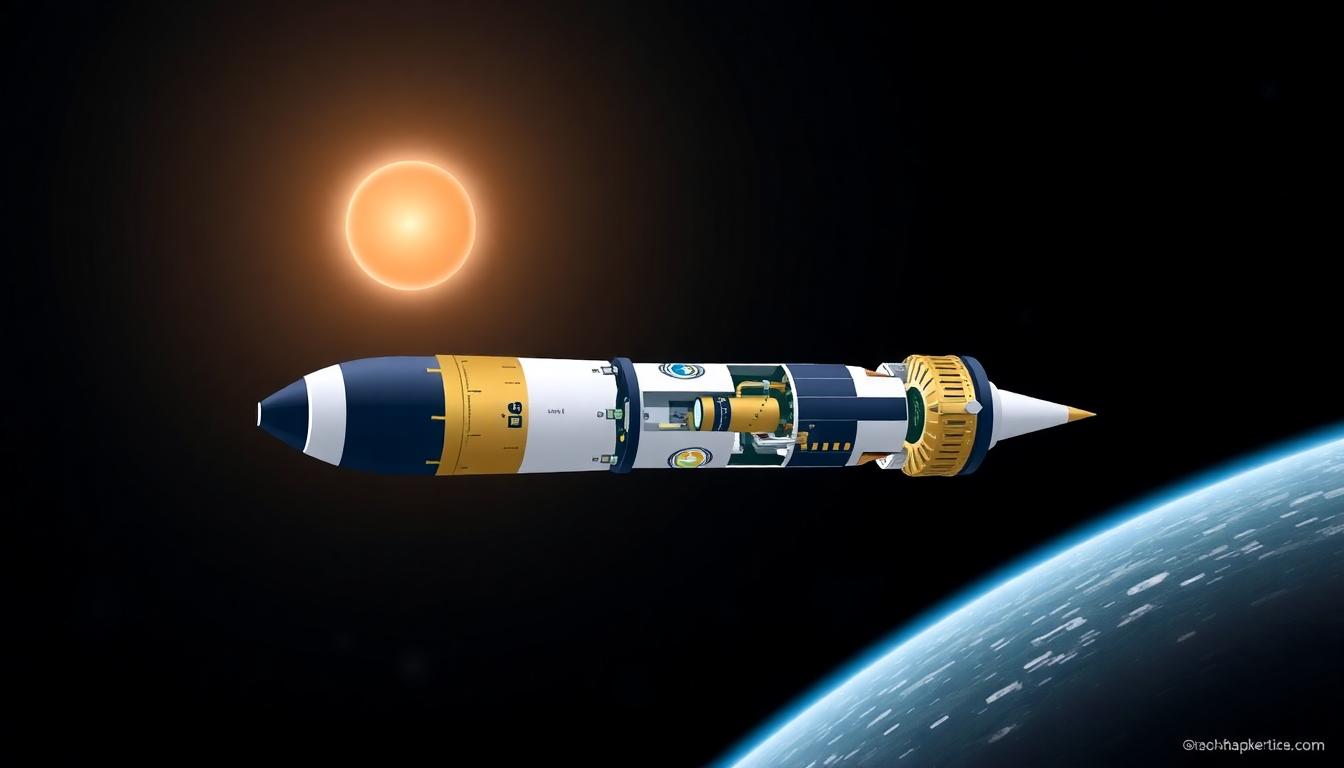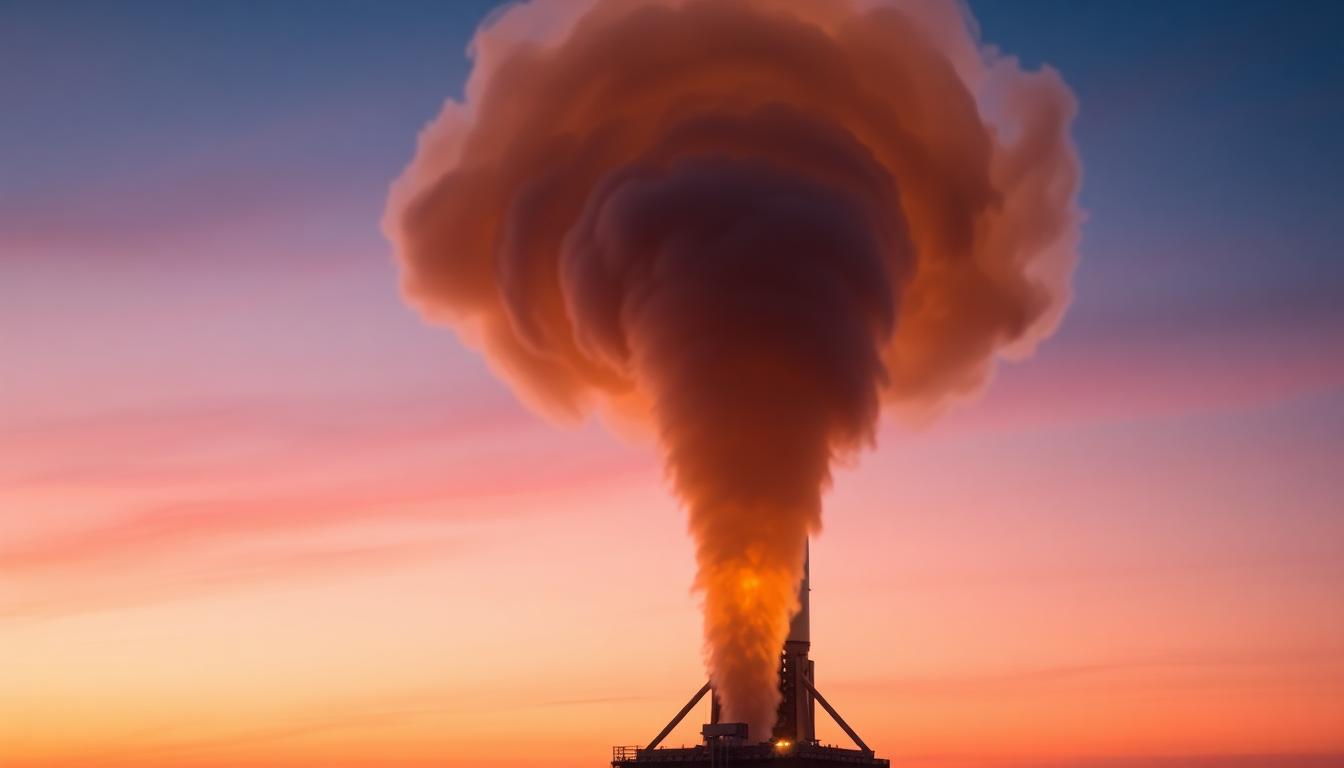A spectacle at dawn, a smooth landing at sea, and another step in building SpaceX’s broadband network.
SpaceX kicked off Sunday with a sunrise launch from Florida’s Space Coast, sending 28 Starlink V2 Mini satellites to low Earth orbit. The flight delivered one of the most photogenic sights in rocketry, as the upper stage exhaust plume lit up against the morning sky, creating a “jellyfish” effect visible for miles along the coastline.
The mission, designated Starlink 10-27, lifted off from Space Launch Complex 40 (SLC-40) at Cape Canaveral Space Force Station at 6:53 a.m. EDT (1053 UTC). Riding a northeasterly trajectory, Falcon 9 carried the stack of satellites to their drop-off orbit a little more than an hour after launch, keeping SpaceX’s pace of near-weekly flights alive.
Perfect weather, stunning visuals
Launch conditions were nearly ideal, with the 45th Weather Squadron calling for a 90% chance of favorable weather. Dry mid-level air and low rain chances set the stage for a clean ascent. For viewers, that meant crisp skies and the dramatic light show that happens when the rising sun hits the upper stage plume at high altitude.
Booster B1085 nails another droneship landing
After powering the rocket through the first minutes of flight, the Falcon 9 first stage separated and began its return to Earth. About 8.5 minutes after liftoff, booster B1085 touched down on the droneship, A Shortfall of Gravitas, stationed in the Atlantic. The landing marked another success for SpaceX’s reusability program and added to the company’s growing tally of at-sea recoveries.

Why this mission matters
Every Starlink launch strengthens SpaceX’s satellite internet constellation. The V2 Mini satellites carry improved hardware for higher capacity and better performance. Adding 28 more birds increases network resilience and throughput, while allowing SpaceX to expand coverage and improve service quality in congested regions.
For SpaceX, cadence is strategy. Frequent flights keep production lines humming, sharpen operations, and hold costs down. Each successful booster recovery extends hardware life and supports the company’s long-term goal of rapid, reliable, and lower-cost access to space.
Mission timeline highlights
- T-0: Liftoff from SLC-40 at 6:53 a.m. EDT (1053 UTC).
- +2:30: Main engine cutoff (MECO) and stage separation.
- +8:30: First stage landing on A Shortfall of Gravitas.
- ~+1 hour: Deployment of 28 Starlink V2 Mini satellites into low Earth orbit.
Starlink V2 Mini: what’s onboard
The V2 Mini design packs more efficient propulsion, upgraded antennas, and more powerful phased array capabilities compared to earlier versions. This helps increase capacity per satellite and reduces latency across the network. While SpaceX eventually plans to deploy larger V2 satellites with Starship, the V2 Mini line lets the company scale performance today using Falcon 9.

Reusability by the numbers
Sunday’s landing added to SpaceX’s running totals for first stage recoveries. Each booster like B1085 builds a track record over many flights, supporting crewed missions, science payloads, and commercial launches. The steady string of droneship landings is central to why Falcon 9 remains one of the most cost-effective launch vehicles in operation.
Beyond cost, reusability improves reliability. Turnaround data gives engineers a constant feedback loop, driving incremental upgrades. That’s how SpaceX maintains both speed and safety at scale.
The sunrise “jellyfish” explained
The “jellyfish” effect happens when high-altitude winds spread the exhaust plume into a translucent fan while sunlight illuminates it against a darker sky. It often appears around dawn or dusk and is a favorite for photographers and launch fans. On this flight, the timing lined up perfectly for a vivid display as the upper stage fired over the Atlantic.

What’s next on the manifest
SpaceX’s schedule remains stacked with more Starlink flights, rideshares, and government payloads. As Starship development marches on, Falcon 9 continues to carry the bulk of missions, underscoring how mature the system has become. Expect more sunrise and sunset opportunities as SpaceX threads its launches through tight windows and favorable weather.
How to watch future launches
- Follow SpaceX’s official X account and YouTube channel for live streams and timelines.
- Check the 45th Weather Squadron updates for launch probability and rule violations.
- For Space Coast viewing, aim for parks and beaches north of Port Canaveral for clear sightlines.
- Bring polarized sunglasses and a camera with a fast shutter to capture plume detail.
Bottom line
Another sunrise, another successful Falcon 9. With 28 more Starlink satellites on orbit and the booster safely back on deck, SpaceX continues to show why cadence and reusability matter. The company keeps building its internet constellation while tuning the launch system that makes it possible. For viewers along the coast, it was a show to remember.
To contact us click Here .






